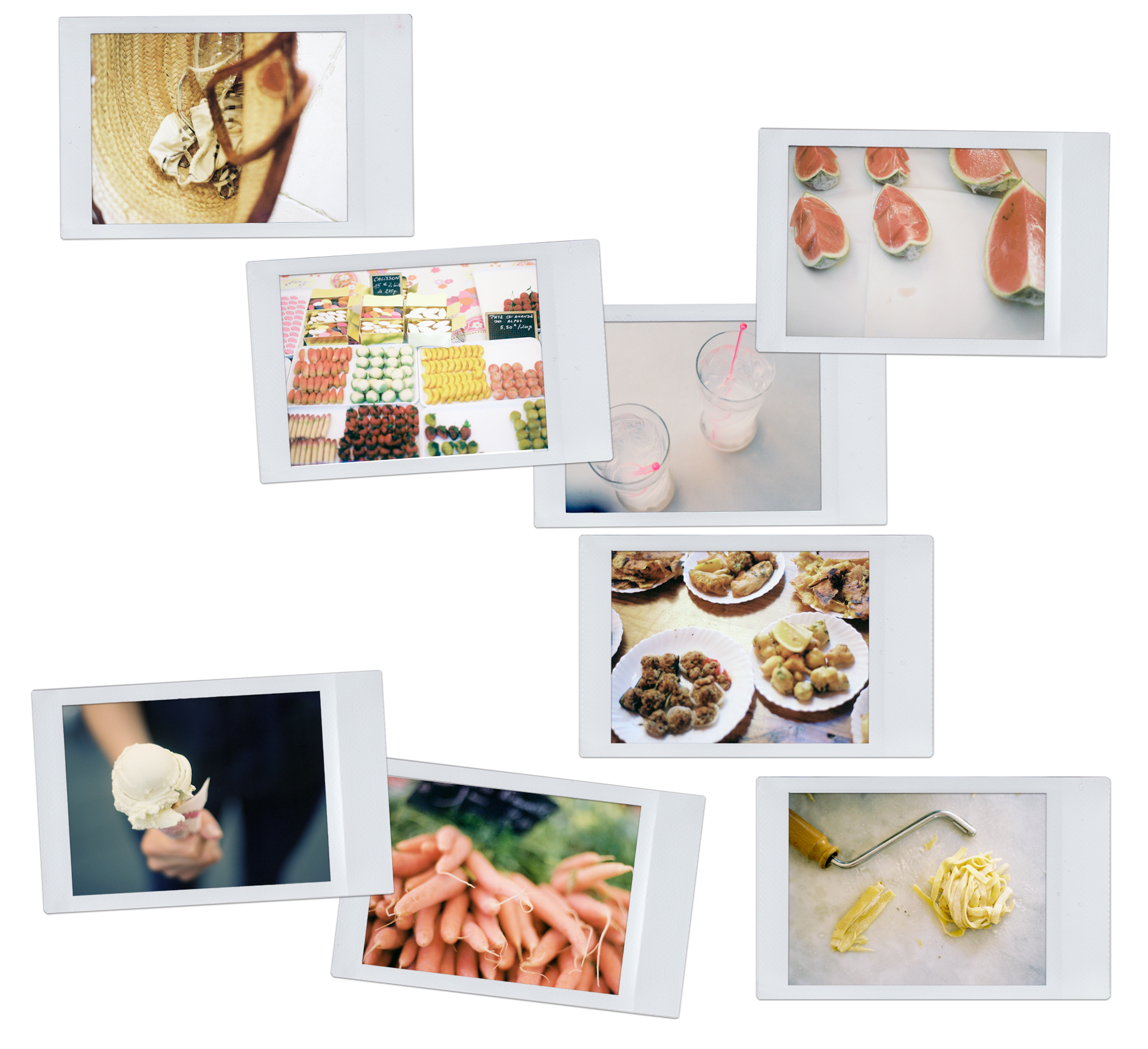[Fromage blanc and raspberry charlotte]

I haven’t spent much time in a home kitchen – let alone made pastries in a home kitchen – for the past eleven months. That’s what a pastry apprenticeship does to you! And really I must admit I feel a bit lost when all I have on hands are a couple of Pyrex bowls, a hand-held mixer, and an oven.
But all it took was a holiday in Fouras, at my grand-parents’. I could navigate through this kitchen with my eyes closed. And I did; by the end of the week, we had a nice collection of homemade pastries: a fondant au chocolat, strawberry meringues, a tiramisu, fruit focaccias, and a raspberry charlotte.
Charlotte is one of those desserts I will never get tired of. Dare I call it my favourite?
In the summer, I love to make it with whichever berries we have lying around. And when the neighbour, Annie, offered us to come and pick raspberries in her garden, my sister and I probably said the word charlotte in unison.
It was still early in the evening. Bumblebees doing a last round before the sunset. A warm wind that only summer nights offer; golden light bouncing on every flower. We picked and picked. And ate some too. And as soon as a plump berry touched my lips, it wiped every memory I ever had of tasting a raspberry before.
When we came home, we whipped cream and folded it into fromage blanc. And a raspberry charlotte was in the fridge before dinner got on the table.
It’s not perfect by any means, but some things don’t need to be.
Charlotte au fromage blanc et aux framboises
This is a slightly more elaborate version of the charlotte that my mother made often as we were growing up. It is not a delicate entremet, but one to be sliced for lunch or dinner, when the nights get longer and warmer. As I’ve mentioned it above, I love to make this while berries are in season, but it also make a wonderful winter dessert. Think poached pears and perhaps a touch of chocolate mousse. Or poached rhubarb and orange in the late winter.
If fromage blanc isn’t available where you live, just use plain natural yoghurt mixed with a little cream cheese instead, a thick Turkish yoghurt would work wonders too.
EDIT 06/03/2019
As you may know, I’ve been trying to write an article about gelatin for – literally – years. And every now and then, I become obsessed with it again.
I’ve been thinking about it a lot lately, as it’s an ingredient that is so tremendously different from one country to another that it makes my job as a chef and a food writer quite difficult.
I won’t get into details about it now, but let me just tell you that in between France, the UK, and Sweden, I’ve had to adjust my recipes a lot to fit the gelatin available in each place.
Yes, gelatin is a difficult subject when it comes to recipe writing as many factors com ein play: brand, bloom strength, weight of each sheet… Sure, you can find information about how gold leaves weigh around 2g, platinum, 1.7g, and so on. And because of this, it should be the same to substitute one leaf of gold for one leaf of platinum. But then again, it depends on the country too. In Sweden, the gelatin used in professional kitchens comes at 4g per sheet, extra gold! And the same brand gelatin, when bought in supermarkets is only half the size, roughly 2g per sheet. So I’ve learnt the hard way that grams are some how more reliable that sheet counts.
The original recipe called for 6 leaves of gelatin, and the gelatin used was the French Vahiné, which comes at around 1.89g per sheet.
I’ve now edited the recipe to include weight too, although note that I mostly use silver and gold strength gelatin leaves, so your gelatin has a strength comprised between 160-190 bloom, you might need to increase the quantity slightly!
Charlotte au fromage blanc et aux framboises
serves 8
For the biscuits cuillère
two dozens of biscuits cuillère, either homemade or bought
300g water
210g caster sugar
For the fromage blanc filling
6 gelatin leaves, approximately 12g
500g fromage blanc
120g caster sugar
330g whipping cream 35%, whipped to soft peaks
a couple handfuls of raspberries
Make a simple soaking syrup by combining the water and caster sugar in a saucepan. Bring to the boil, then pour into a wide container, and allow to cool down while you get on with the rest.
Soak the gelatin leaves into cold water for at least ten minutes. Divide the fromage blanc into two heatproof bowls.
In one of the bowls, mix in the sugar until dissolved. Heat the other bowl containing half of the fromage blanc in the microwave until it reaches around 40°C. Then quickly drain the gelatin leaves, and incorporate to the warm fromage blanc. Mix until fully melted. Then, fold this into the sweetened fromage blanc. And finally, gently fold in the whipped cream in a couple of batches.
When the syrup is cool enough, soak the biscuits into it for a few seconds and arrange in a shallow charlotte mould.
Pipe half of the mousse into the biscuit-lined tin, then cover with a handful of raspberries and more soaked biscuits. Top with the remaining mousse.
Chill for a couple of hours, preferably overnight. Unmould and serve.



































